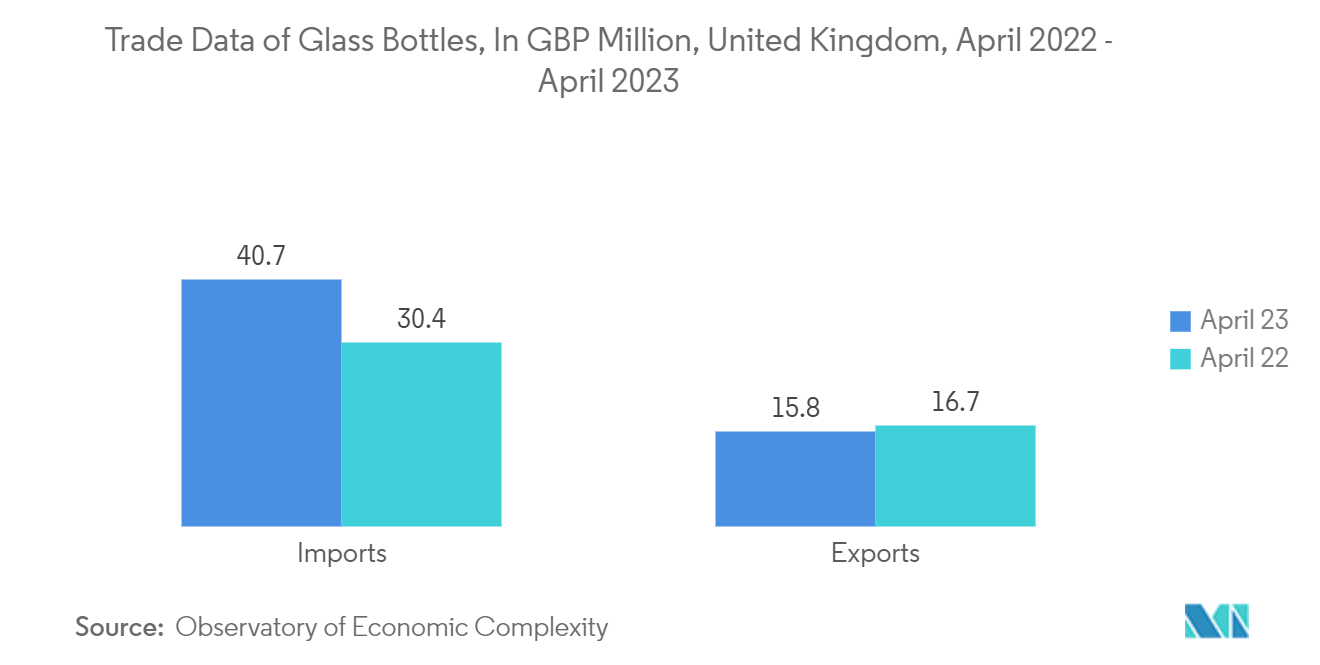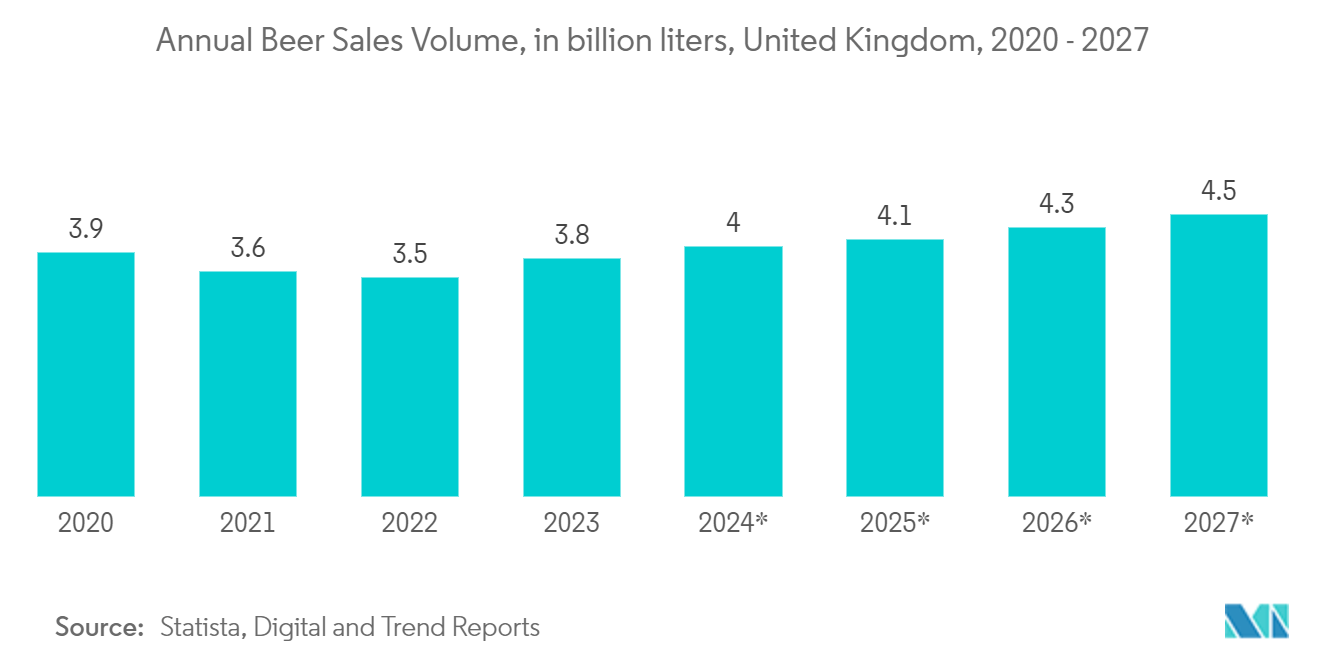Market Trends of United Kingdom (UK) Glass Bottles and Containers Industry
Beverages to be the Largest End-user Industry
- Glass is among the most preferred packaging materials for alcoholic beverages, such as spirits. The ability of glass bottles to preserve the aroma and flavor of the product is driving the demand. Rising consumer demand for safe and healthier packaging helps glass packaging grow in different categories. Also, innovative technologies for embossing, shaping, and adding artistic finishes to glass make glass packaging more desirable among end-users.
- Glass bottles and containers are mainly used in alcohol and nonalcoholic beverages because of their chemical sterility and non-permeability. Also, glass is a significant barrier material and ranks highly for transparency in packaging. It creates an extended shelf-life package because it resists CO2 loss and O2 invasion. The glass bottle frangibility has been improved by new processing and coatings. Modern lightweight and strengthening techniques have improved the strength and consumer-friendliness of glass.
- Furthermore, wine sales and consumption have grown manifolds during the pandemic, and while most of the wines sold are packaged in the standard 750-milliliter format, alternatives such as small format bottles are on the rise. The increase in the consumption of liquor in the region during the pandemic has positively impacted the demand for glass bottles.
- According to the Observatory of Economic Complexity (OEC), in April 2023, United Kingdom exports of Glass Bottles totaled GBP 15.8 million (USD 19.48 million), while imports totaled GBP 40.7 million (USD 50.18 million), resulting in an overall trade deficit of GBP 24.9 million (USD 30.70 million). From April 2022 to April 2023, the United Kingdom's export of Glass Bottles decreased by GBP 931,000 (USD 1,147,965), or 5.57%, from GBP 16.7 million (USD 20.59 million) to GBP 15.8 million (USD 19.48 million), while its imports rose by GBP 10,000,000 (USD 12,330,456.2), or 33.9%, from GBP 30.4 million (USD 37.48 million) to GBP 40.07 million (USD 49.40 million).
- The demand from the alcoholic and nonalcoholic beverage industry primarily drives the increase in the import of glass bottles in the country. This upswing is expected to be witnessed in the forecast period also.

Flint to Hold Major Market Share in Colors
- The utilization of transparent packaging is on the rise for food items such as wine, milk, beer, and juice. This decision is driven by the marketing suggestion that customers prefer to inspect the product before purchase.
- In the United Kingdom, the challenge in producing recycled glass is not in its difficulty but rather the insufficient supply of high-quality recycled clear glass (cullet) necessary for making clear glass bottles with high recycled content. Green glass is the only option if a product requires a glass bottle with a high recycled content. While dark glass is a viable alternative, it may not be suitable for certain products and brands, particularly in the food and beverages industry, where a crystal-clear glass of the highest quality, known as flint or extra-flint, is preferred.
- Frequently, the process of segregating mixed-colored glass at a recycling plant is excessively time-consuming and costly. Consequently, the shattered fragments of mixed glass are repurposed to manufacture glass fiber products, which can serve as an insulation material rather than being transformed into fresh bottles. Multi-stream recycling is the most effective method for producing high-quality glass cullet, which is free from other recyclables.
- The purity of the stream is crucially important, particularly with regard to the color of the glass being processed. Green glass can use up to 95% recycled glass, but there are much stricter quality requirements for white or flint glass. In this case, the maximum level of recycled glass permitted is only 60% due to the risk of contamination and its detrimental effect on the final product's quality.
- In the wine industry, the usual bottle colors are green or amber. However, there has been a recent push for lighter and thinner glass bottles due to environmental concerns and commercial demands. This shift towards lighter bottles aims to reduce energy consumption, transportation costs, and recycling expenses. Furthermore, the use of flint glass bottles responds to the need to highlight the color of rose or white wines and improve the overall aesthetics of the packaging. Furthermore, the increasing consumption of beer in the United Kingdom is also expected to boost the growth of the market.


